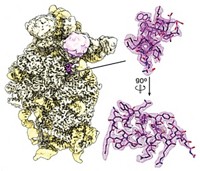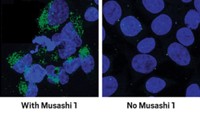Advertisement
Grab your lab coat. Let's get started
Welcome!
Welcome!
Create an account below to get 6 C&EN articles per month, receive newsletters and more - all free.
It seems this is your first time logging in online. Please enter the following information to continue.
As an ACS member you automatically get access to this site. All we need is few more details to create your reading experience.
Not you? Sign in with a different account.
Not you? Sign in with a different account.
ERROR 1
ERROR 1
ERROR 2
ERROR 2
ERROR 2
ERROR 2
ERROR 2
Password and Confirm password must match.
If you have an ACS member number, please enter it here so we can link this account to your membership. (optional)
ERROR 2
ACS values your privacy. By submitting your information, you are gaining access to C&EN and subscribing to our weekly newsletter. We use the information you provide to make your reading experience better, and we will never sell your data to third party members.
Biological Chemistry
How Sickle Cell Mutation Mutes Malaria
Imaging: Closeup of cellular machinery reveals that the genetic anomaly prevents parasite from building its transport network
by Carmen Drahl
November 14, 2011
| A version of this story appeared in
Volume 89, Issue 46

The mutation that causes sickle cell anemia also prevents severe malaria, and researchers may have finally figured out why: The genetic tweak stymies the malaria parasite’s attempt to hijack transport machinery inside red blood cells (Science, DOI: 10.1126/science.1213775). The discovery could lead to new targets for malaria treatments.
In the 1940s, doctors noticed that patients with sickle cell anemia were more likely to survive a bout with malaria, but they were unable to find an explanation. Subsequent research revealed the parasite places sticky protein knobs on red blood cell membranes to avoid detection and expulsion. In people with certain hemoglobin defects, including the sickle cell trait, the knobs end up sparsely and improperly placed, but no one knew why, says Michael Lanzer of Heidelberg University, in Germany. His team used cryoelectron tomography to better define the machinery that’s involved in knob placement.
Many groups have tried to visualize this machinery, Lanzer says, “but they couldn’t define it in all its intricate detail because everyone was using cells preserved by chemical fixation,” which degrades delicate proteins. Thanks to recently developed low-temperature preservation techniques, Lanzer’s team learned that the parasite mines the cytoskeletal protein actin from red blood cells. With this actin, the parasite builds highways to ferry adhesive proteins and other essentials. But in red blood cells with the sickle mutation, the parasite is unable to use actin to properly place its knobs.
On the basis of results from a test-tube assay, Lanzer’s team proposes that oxidized forms of hemoglobin common in the sickle mutation interfere with actin polymerization, thwarting construction of the malaria superhighway. His team now plans to verify those results in red blood cells.
Leann Tilley, who studies malaria at the University of Melbourne, in Australia, praised the work, noting that follow-up studies have the potential to reveal parasite proteins that are responsible for hijacking actin. “These proteins may be enzymes that could be targeted with drugs,” she says.





Join the conversation
Contact the reporter
Submit a Letter to the Editor for publication
Engage with us on Twitter